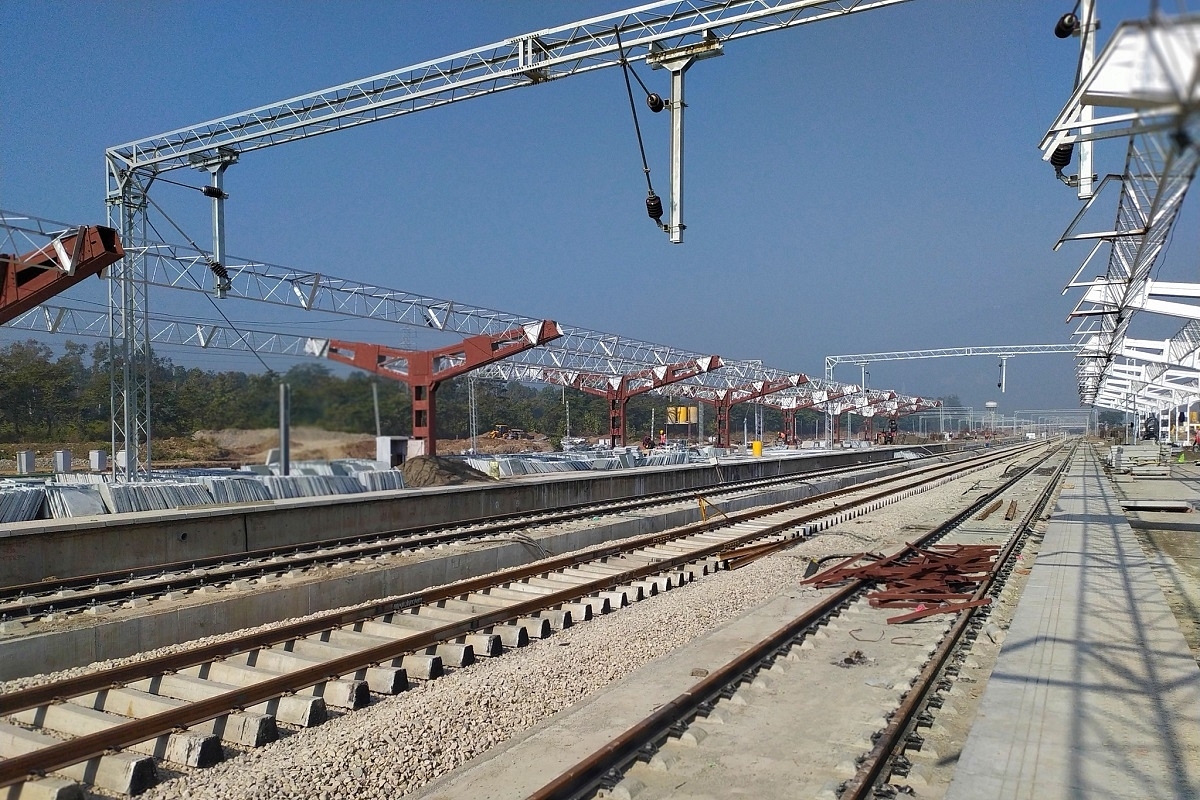Infrastructure
Indian Railways: 452 Projects Costing Rs 7.33 Lakh Crore At Various Stages Of Planning, Sanction And Execution
- The projects include 183 new lines, 42 gauge conversion and 227 doubling projects.

Construction work on a railway station in progress.
As many as 452 railway projects are in different stages of planning, sanction and execution, according to the Indian Railways.
This includes 183 new lines, 42 gauge conversion and 227 doubling of the total length of 49,323 km costing about Rs 7.33 lakh crore.
The railways has commissioned 11,518 km long line with an expenditure of Rs 2.35 lakh crore having been incurred up to March 2022.
All the projects have been reviewed based on last mile connectivity, missing links, traffic potential on the project, capacity enhancement, availability of land, forest/wild-life clearance etc.
Presently, the railway’s focus is on completion of capacity enhancement projects, last mile connectivity projects, national projects and gauge conversion projects etc.
Various steps taken by the government for speedy sanction and implementation of rail projects. They include (i) setting up of Gati Shakti units (ii) prioritisation of projects (iii) substantial increase in allocation of funds on priority projects (iv) delegation of powers at field level (v) close monitoring of progress of project at various levels, and (vi) regular follow up with state governments and authorities concerned for expeditious land acquisition, forestry and wildlife clearances and for resolving other issues pertaining to projects.
According to the railways, this has led to substantial increase in rate of commissioning since 2014.
Since 2014, there has been substantial increase in fund allocation for new line, gauge conversion and doubling projects, and commensurate commissioning of projects in Indian Railways.
The average annual budget allocation for these works during 2014-19 increased to Rs 26,026 crore per year from Rs 11,527 crore per year during 2009-14 (126 per cent more than average annual budget allocation during 2009-14).
The annual budget allocation increased to Rs 39,836 crore in financial year (FY) 2019-20 (246 per cent more than average annual budget allocation during 2009-14), Rs 43,626 crore in FY 2020-21 (278 per cent more than the average annual budget allocation during 2009-14) and Rs 56,716 crore for FY 2021-22 (392 per cent more than average annual budget allocation during 2009-14).
For FY 2022-23, the highest-ever budget outlay of Rs 67,001 crore has been provided for these works, which is 481 per cent more than average annual budget outlay of 2009-14.
During 2014-22, across Indian Railways, 20,628 km sections (3,970 km new line, 5,507 km gauge conversion and 11,151 km doubling) have been commissioned at an average of 2,579 km/year which is 70 per cent more than the average commissioning during 2009-14 (1,520 km/year).
Land acquisition and its demarcation is done by revenue authorities of the state government. Compensation for land acquired by the railways is deposited with the state government concerned.
The railways closely and regularly follows up with state governments and authorities concerned for expeditious land acquisition, demarcation for infrastructure projects.
According to the information given by Railway Minister Ashwini Vaishnaw in a written reply to a question in the Lok Sabha on Wednesday (7 December), the completion of any railway projects depends on various factors like quick land acquisition by state governments, forest clearance by officials of forest department, deposition of cost share by state government in cost sharing projects, etc.
Also, various other factors that affect the completion time and cost of the project are, prioritising projects, shifting of infringing utilities, statutory clearances from various authorities, geological and topographical conditions of area, law and order situation in the area of project site, number of working months in a year for particular project site due to climatic conditions.
Support Swarajya's 50 Ground Reports Project & Sponsor A Story
Every general election Swarajya does a 50 ground reports project.
Aimed only at serious readers and those who appreciate the nuances of political undercurrents, the project provides a sense of India's electoral landscape. As you know, these reports are produced after considerable investment of travel, time and effort on the ground.
This time too we've kicked off the project in style and have covered over 30 constituencies already. If you're someone who appreciates such work and have enjoyed our coverage please consider sponsoring a ground report for just Rs 2999 to Rs 19,999 - it goes a long way in helping us produce more quality reportage.
You can also back this project by becoming a subscriber for as little as Rs 999 - so do click on this links and choose a plan that suits you and back us.
Click below to contribute.
Latest